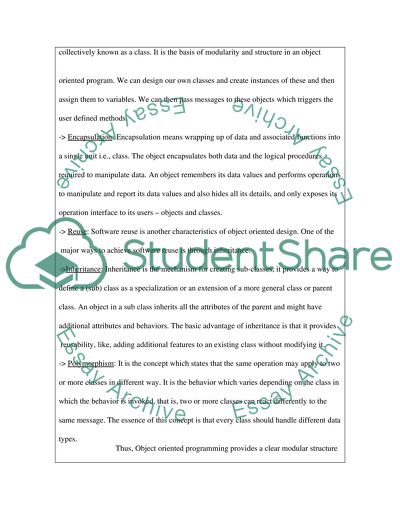Cite this document
(“Object Oriented Programming Essay Example | Topics and Well Written Essays - 1000 words”, n.d.)
Retrieved from https://studentshare.org/technology/1525421-object-oriented-programming
Retrieved from https://studentshare.org/technology/1525421-object-oriented-programming
(Object Oriented Programming Essay Example | Topics and Well Written Essays - 1000 Words)
https://studentshare.org/technology/1525421-object-oriented-programming.
https://studentshare.org/technology/1525421-object-oriented-programming.
“Object Oriented Programming Essay Example | Topics and Well Written Essays - 1000 Words”, n.d. https://studentshare.org/technology/1525421-object-oriented-programming.


